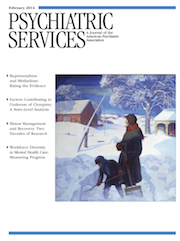In December, the Obama Administration announced plans to issue $100 million in new funding to help ensure that Americans who need behavioral health care will have a better chance of receiving it. Half the funding will come from U.S. Department of Health and Human Services (HHS) to help federally qualified community health centers establish or expand behavioral health services. The other $50 million will be made available over the next three years by the U.S. Department of Agriculture to finance construction, expansion, or improvement of mental health facilities in rural areas, where access to services is an ongoing problem.
The announcement came a few days before the one-year anniversary of the shootings at Sandy Hook Elementary School in Newtown, Connecticut, a few weeks after the Administration finalized rules under the Mental Health Parity and Addiction Equity Act, and a few weeks before full implementation of the Affordable Care Act (ACA) would extend behavioral health benefits and parity protections for approximately 60 million Americans.
It is estimated that the HHS funds, made available through the ACA, will support the expansion of behavioral health services in approximately 200 community health centers. For more than 45 years, the Health Resources and Services Administration (HRSA) has worked to create one of the largest safety net systems of primary and preventive care in the country. Approximately 1,200 community health centers now operate nearly 9,000 service delivery sites that provide care to more than 21 million patients in every U.S. state, the District of Columbia, Puerto Rico, the U.S. Virgin Islands, and the Pacific Basin. Data from HRSA indicate that in 2012, one of every 15 people living in the United States relied on a HRSA‐funded clinic. In 2012, community health centers treated more than 21 million people—62% were from racial-ethnic minority groups, 36% had no health insurance, and 32% were children.
Community health centers can use the new funds for adding services to treat patients with mental and substance abuse disorders, hire new mental health professionals, and implement team-based models of care to support integration of primary and behavioral health services, a key goal of the ACA.
The U.S. Department of Agriculture is providing the $50 million in new funds from its Community Facilities Direct and Guaranteed Loan Program. These funds can be used to improve or construct mental health service facilities or put in place innovative tools, such as telemedicine, to expand access to mental health services at rural schools, community centers, hospitals, and other community-based settings.
In addition to these new funds, the President has proposed an additional $130 million in his fiscal year 2014 budget for an initiative to help teachers and other adults who work with youths to recognize signs of mental illness and connect children and their families to treatment. The initiative will also support innovative state-based programs to improve mental health outcomes for young people and train 5,000 more mental health professionals. Other 2014 budget provisions to improve mental health treatment and prevention services are described on the White House Web site at
www.whitehouse.gov/omb/budget/factsheet/improving-mental-health-prevention-and-treatment-services.

